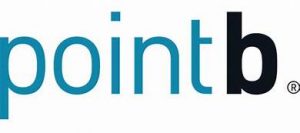Jun 3
2020
Digital Tools Enable Care Delivery During COVID-19 Disruption
By Matt Henry, senior manager consultant, Denver, Point B; Talia Avci, managing consultant, Chicago, Point B; and Ashley Fagerlie, managing consultant, Phoenix, Point B.
 As the COVID-19 crisis disrupts traditional care delivery, digital tools such as telehealth are making it possible to deliver care outside your facility’s walls. Here’s how to prepare your organization both now and in the future.
As the COVID-19 crisis disrupts traditional care delivery, digital tools such as telehealth are making it possible to deliver care outside your facility’s walls. Here’s how to prepare your organization both now and in the future.
Amidst the COVID-19 pandemic, healthcare has literally left the building. With millions of Americans under orders to stay home, in-person care delivery and elective procedures have been effectively shut down, elevating the need for alternative care delivery options.
Health systems are in a crisis, balancing heroic action to ramp up and support their communities through the COVID pandemic with existential threats to established service line revenue and cost structures. The importance of using technology to extend reach and effectiveness of your mission has never been greater.
While other industries have spent years disrupting traditional operating models to deliver online engagement to meet customer needs, healthcare has lagged due to many practical, economic, regulatory, cultural and quality of care reasons.
As health systems prepared for a surge in infectious patients, many have leveraged their digital front door as a way to deliver credible information, guide care, and deliver safe and effective services to patients.
Taking lessons learned, the time is now to plan for your post-COVID plans and how your digital front door can extend your mission as you intentionally re-open your care facilities.
Re-imagine access: As you build your strategy, consider how new front door solutions are being offered by non-traditional ‘providers’, like Anthem, Walgreens and CVS/Aetna, to address gaps in the primary care landscape.
These gaps include inaccurate online health information, lack of access to personal health information, long wait times for appointments, lack of price transparency and other issues that impact patients along their care journey.
Barriers can be addressed by tools that assist in triaging, medication adherence, capacity management as well as two-way patient communication via websites, patient portals and apps.
Anthem has partnered with a digital health start-up, K Health, to offer symptom triaging to their 40 million members to provide care guidance and access. Members provide their symptoms to an AI-enabled algorithm and can text directly with providers for advice. Walgreens, with locations that are accessible by 78% of the U.S. population, has launched Find Care, which offers everything from lab tests to virtual consults.
CVS/Aetna has spent nearly 10 years building out digital health tools, focusing on medication adherence, with the power to leverage data as a pharmacy, payer and retail clinic to connect with their patients. Other organizations are launching chat bots for assessments and triage or more deeply leveraging remote patient monitoring for care. Each of these digital front door tools is changing how patients access care.